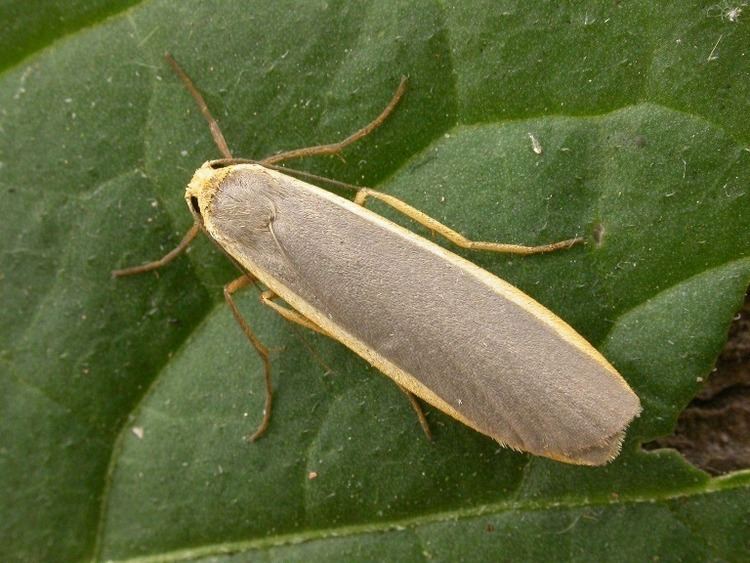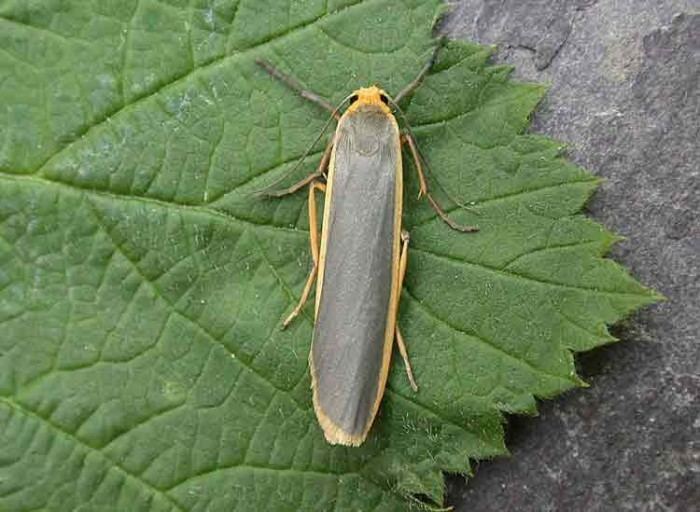Rank Species | Genus Manulea Higher classification Manulea | |
 | ||
Similar Eilema, Manulea complana, Butterflies and moths, Katha depressa, Collita griseola | ||
Two common footman moths lapping up sugar water 12th july 2016
The common footman (Manulea lurideola) is a moth of the family Erebidae. It is distributed throughout Europe and east through the Palearctic to Lake Baikal.
Contents
- Two common footman moths lapping up sugar water 12th july 2016
- Technical description and variation
- Biology
- References

This species has a wingspan of 31–38 mm. The forewings are grey with a yellowish-buff streak along the costa. The hindwings are a uniform cream colour. Like other footman, it rests with its wings wrapped around its body (The common name footman comes from a supposed resemblance to the uniform of such a servant).
Technical description and variation

Wingspan 31–38 mm. Forewing broadened towards the outer margin, bright glossy lead-grey with broad, regular, light yellow costal band, somewhat dulled at the apex, and pure yellow fringes; hindwing, head and neck and anal tuft of male ivory yellow. Beneath,the forewing is only suffused with sooty grey at the base and on the disc, so that a broad outer border is pale yellow. Hindwing pale yellow with a slightly dark costal margin.
Biology
This moth flies at night in July and August and is attracted to light and nectar-rich flowers.[1]

Larva dark lilac-grey with black dorsal line and black head, bearing black and yellow hairs; subdorsal lines black, stigma-line orange. It usually feeds on various lichens including Parmelia, although it has also been recorded feeding on buckthorn and oak. The species overwinters as a larva, hibernating, until the end of May. Pupa reddish brown and glossy. According to Schmidt the larvae prefer the trunks of beeches and oaks, but (Seitz) " I often beat the moths out of the lower branches of high, solitary larches in the Alpine valleys; locally very common, especially in the mountains"
- ^ The flight season refers to the British Isles. This may vary in other parts of the range.


